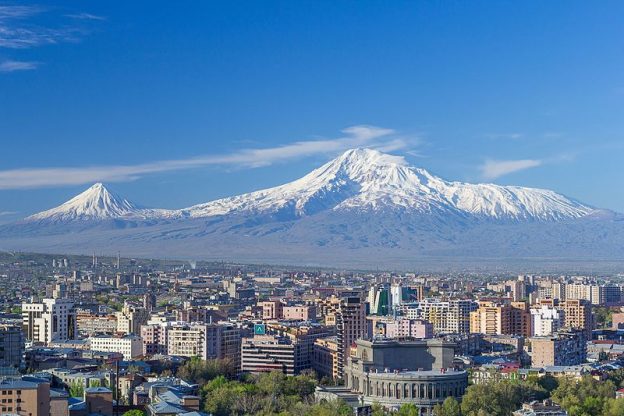As Noah’s family began to multiply and the number of descendants grew on the face of the earth after the flood, many of them began to venture forth from the region of Ararat (Armenia) and came to settle in the plain in the land of Shinar (Gen. 11:1,2). It was here that they began to build a tower to reach to heaven, because they wanted to make themselves a name, lest they be scattered abroad on the face of the whole earth (Gen. 11:3,4). This tower was later called Babel (more about that in a moment).
The name “Shinar” is apparently derived from “sheni” meaning “two” and “‘ar” or “nahar” meaning “rivers,” indicating it lies somewhere between the two great rivers, the Tigris and the Euphrates. The land of Shinar is probably identical with Babylonia or Southern Mesopotamia, extending almost to the Persian Gulf. It is recorded in Daniel, that Nebuchadnezzar, king of Babylon, took the vessels of the house of the Lord and brought them into the land of Shinar into the house of his god, showing that Babylon was in the plain of Shinar (Dan. 1:1,2). In Joshua 7:21, the same word is rendered “Babylonish,” referring to style of garment. Other cities besides Babylon in the area under his control were Erech, Accad and Calneh (Gen. 10:10).
Now the beginning of the kingdom of Babel was accomplished through the efforts of Nimrod (Gen. 9:9,10). Nimrod was the grandson of Ham, Cush being Nimrod’s father (Gen. 9:6-8). We are informed that Nimrod began to be a mighty man in the earth and that he was a mighty hunter before the Lord (Gen. 9:8,9). The name Nimrod comes from a Hebrew word meaning to rebel and it has the form of being not only “a rebel” but “The Rebel.” So it seems that Nimrod’s reputation was nefarious.
From this, it is not difficult to conclude that Nimrod’s rebelliousness was against the Lord. Josephus says of Nimrod that it was he who excited the people “to such an affront and contempt of God…He persuaded them not to ascribe it to God, as if it was through his means they were happy, but to believe that it was their own courage which procured that happiness. He also gradually changed the government into tyranny, seeing no other way of turning men from the fear of God, but to bring them into a constant dependence on his power” (The Antiquities of the Jews, I:IV:2).
There are 25 known towers from the ancient near eastern world, in the area of what is now Iran and Iraq. These are built from mud bricks baked either in the sun or in a kiln because there were no great stone quarries from which to find megaliths to build these structures, as in Egypt. In the best preserved tower at Ur, which has been reconstructed somewhat on different occassions, the bottom tier is composed of some 720,000 baked bricks. Some have suggested the ruins at Etemenanki is the tower we read about in Genesis eleven.
Whether or not that tower’s remains still exist, it was on this plain of Shinar that these rebellious children attempted to build their own way to heaven. Perhaps there was a little desire on their part to avoid being destroyed by a flood again by building a tower higher than the mountains so that a flood could never reach them, as Josephus states. But the Bible explicitly states that they wanted a tower to reach to heaven so that they could make a name for themselves (Gen. 11:4). Ever since this time men have tried to build their own way to heaven, on their own terms, to make a name for themselves.
At Mt. Sinai, the children of Israel wanted to build their own god, a golden calve, and fall down to worship it, thinking they could devise their own plan of salvation. “These by thy gods O Israel..” they arrogantly claimed, “which brought thee up out of the land of Egypt” (Ex. 32:4). Jereboam constructed two calves of gold and placed them at Dan and Bethel, perverting the place and time and priesthood of God’s ordained worship (I Kings 12). The history of Israel is a history of idolatry, as is the history of the world (Rom. 1).
Today we have men who devise their own systems of salvation, too. They build denominational towers with the half-baked bricks of false doctrine that they think can reach to heaven. Men also think they can play god themselves and try to rule over everyone else, decreeing how everyone else should live. They have delusions of granduer and want to control the sun and the food we eat and our genes. They declare that God is dead and say that they are becoming gods themselves. Arrogance. Foolishness.
But whether they know it or not the Lord will come down and confound their language and destroy their temples and their man-made gods and will embarrass their arrogant claims of power and knowledge. The Lord will have them in derision. Just like He did with the builders of the tower of Babel in the plains of Shinar.
Eric L. Padgett

